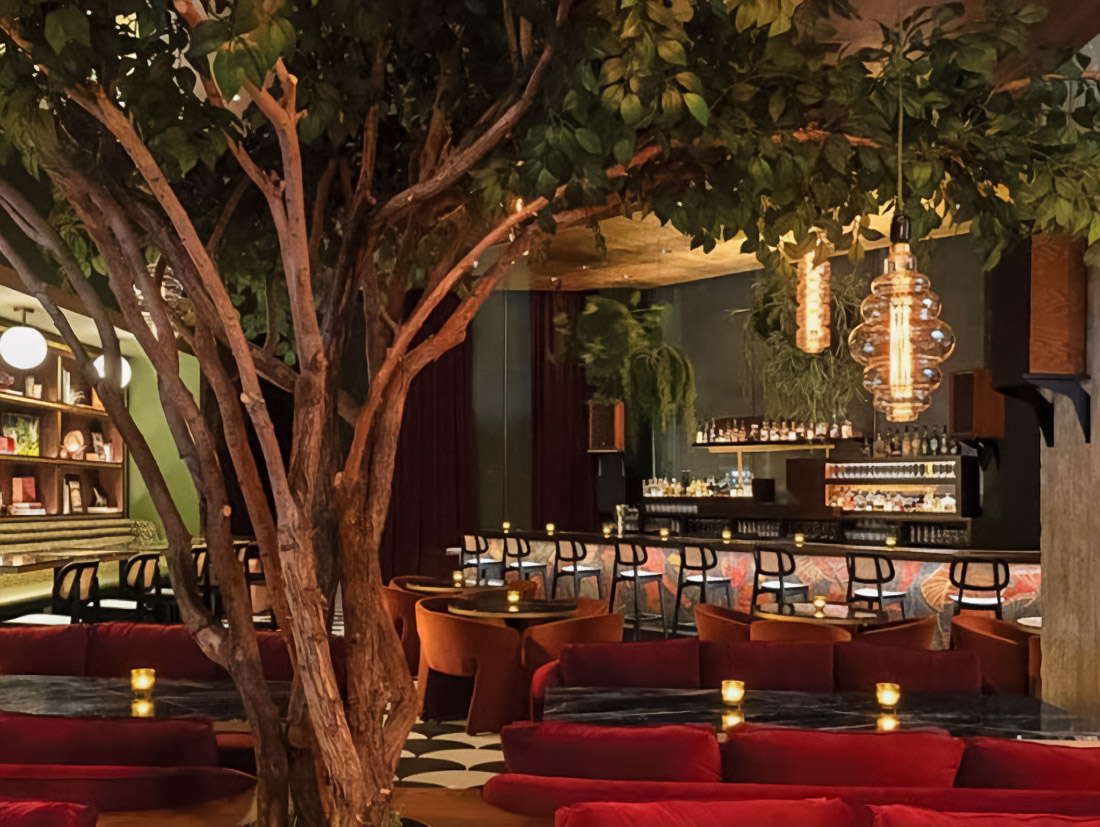In the modern world, in the design of restaurants, material integrity becomes an important aspect, influencing the perception and atmosphere of the establishment. The importance of choice between authentic and artificial materials should not be underestimated because they form not only aesthetics but also the functionality of space. The task of designers is to create a unique atmosphere that reflects the concept of the restaurant and justifies the expectations of its visitors. In 2022 year, the world market of design interiors spent more than 10 billion dollars only on materials, which underscores the significance of a given theme. Learn more about best restaurants in quarter to see how to use various materials in the interior.
Material integrity in the interior: Basis for unique experiences

Material integrity — this cornerstone of design interiors, emphasizing the importance of authenticity of materials. In the restaurant industry, this concept plays a key role, as material influences both on the atmosphere and on the perception of the establishment by clients. The use of authentic and artificial materials forms the aesthetics and functionality of any space. The task of designers is to create an attractive atmosphere, which combines with the concept of the restaurant and the expectations of its visitors. In 2022 year, on the world market of design, interiors spent more than 10 billion dollars only on materials.
Authentic materials: Appeal and durability
Authentic materials, such as wood, stone, brick, and metal, have many advantages. Firstly, their durability and resistance to wear are especially important for restaurants with high foot traffic — according to statistics, 80% of restaurants with glass showcases prefer to use natural materials. Secondly, their aesthetic appeal provides coziness and warmth. In 2021, 65% of restaurants in the world used wood as the main material for their interiors.
An Example of the successful use of authentic materials in the restaurant is Noma in Copenhagen. Here, natural elements, such as wooden beams and stone walls, created a space that reflected Scandinavian traditions and values. This helped to enhance the atmosphere and emphasize the concept of the restaurant of new Nordic cuisine.
Artificial materials: Savings and creativity
Artificial materials, such as laminate and composites, offer their advantages. The price of these materials can be 3-5 times lower than natural ones, and they also provide a designer with a wide choice of textures and colors. London Sketch is an example of the effective use of artificial materials: bright plastic elements created a futuristic atmosphere that attracted the attention of the young audience. This experimental approach earned the restaurant international recognition, increasing attendance by 30% during the first year after the redesign.
Nevertheless, these materials have disadvantages — they are less durable and less eco-friendly. Excessive use of artificial materials can cause a feeling of cheapness.
Comparative analysis: Budget, concept, audience
- Budget: Natural materials more expensive, but more durable. On average, the budgets of restaurants make up 20% of the total cost of construction.
- Concept: Authentic materials suitable for traditional and environmentally sustainable establishments, and artificial materials for modern and creative.
- Target audience: Youth open to experiments, people of older age prefer classics.
Impact on clients: From perception to loyalty
Materials in interior influence on the perception of restaurants by clients. Authentic materials embody quality and luxury, which are associated with coziness and hospitality. In turn, the boldness of artificial materials attracts young and creative clients, fostering the creation of unexpected impressions. Research in the year 2023 showed that 72% of clients are inclined to return to establishments where they feel comfortable.
Recommendations for successful design of restaurants
When choosing between authentic and artificial materials, it is important to consider many factors: budget, concept, and target audience. Restaurants that are oriented toward traditions and sustainable development should use authentic materials to emphasize their values. Modern and experimental establishments can profitably use artificial materials to realize fresh ideas and attract youth.
In the end, the success of a restaurant depends on how harmoniously and integrated will be used materials in the overall design of the space. This should inspire and attract visitors, creating memorable impressions. Correctly chosen materials can become the basis for a loyal client base.

Hockey fan, tattoo addict, audiophile, Saul Bass fan and RISD grad. Working at the intersection of modernism and mathematics to craft experiences both online and in real life. My opinions belong to nobody but myself.




